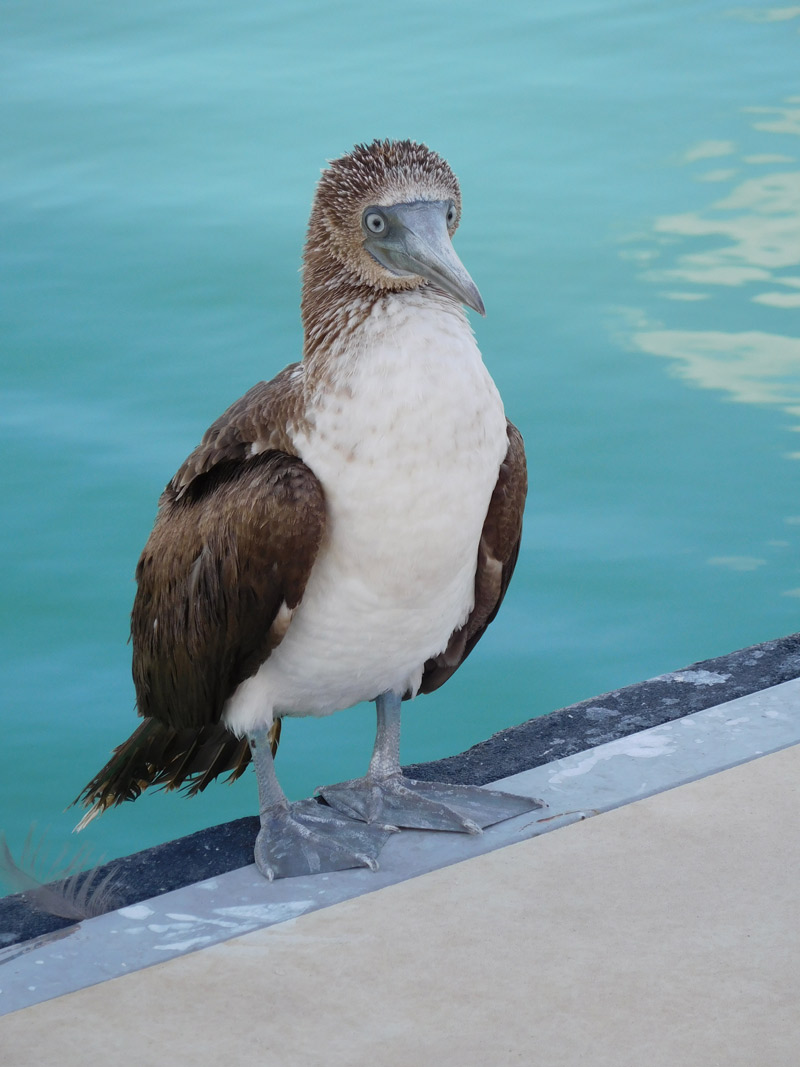Utah County Birders
Newsletter
December 2018
Contents
Monthly Meeting
Upcoming Field Trips
Captain's Log
Bird of the Month
Special Repprt
Field Trip Reports
Printable Version
DECEMBER MEETING:
December 13th, 2018, 7:00 PM at the Bean Museum on BYU Campus -
Map to Museum
Presentation and assignments for the
Provo Christmas Bird Count by Bryan Shirley
(see CBC schedule
for details)
FIELD TRIPS:
15 Dec 2018 - Provo Christmas Bird Count -
(details)
26 Dec 2018 - Payson Christmas Bird count - (details)
Utah County Birders
Captain’s Log: December
2018
by Keeli Marvel
Another year,
another challenge drawing to a close. I hit gold status this last
month with the addition of the Surf Scoter up at Rockport Reservoir.
How's the challenge going for all of you? I hope everyone had fun!
We'll have another challenge in 2020, so if anyone has any
suggestions on what they would like to do for the next one - pass
them my way!
We're about to launch into one of the busiest months of the year,
and do you know what that means?! It's CHRISTMAS BIRD COUNT TIME!
Many of you are old hats at the Christmas Bird Count, but since
we've had quite a few new folks joining our ranks, I'd like to give
you a little history about the origins of the Christmas Bird Count
and a description of what it has grown to become today.
In the late 1800s it was a tradition in some parts of the US to have
a "side" hunt at Christmas where people chose sides, went out, and
shot as many animals and birds as they could. The side who brought
back the most animals won. Right around the turn of the century
people were becoming more aware of the impact they were having on
wildlife populations (the Migratory Bird Treaty Act was another
result of this growing awareness), and so an early Audubon Society
officer by the name of Frank Chapman proposed a census or count
instead of the usual hunt as a way to reduce their impact on
wildlife populations. And so, in the year 1900 the Christmas Bird
Count was born!
The Christmas Bird Count is one of the oldest running citizen
science programs in the world,and the data on bird populations that
have been collected annually is used by the Audubon society and
other organizations to assess the health of bird populations and
inform conservation actions by helping track patterns and trends in
the change of bird populations over the past 100 years.
Every year Christmas Bird Counts are held between December 14 and
January 5 with count circles all over the US and the world. There
are now over 2500 count circles around the world in the US, Canada,
Hawaii, the Pacific Islands, the Carribbean, and Central and South
America. You can see a map of all the count circles here:
https://audubon.maps.arcgis.com/apps/View/index.html?appid=fadfb421e95f4949bde20c29a38228bd
In any given year, there are up to 29 count circles held in Utah.
The Utah County Birders currently hosts two counts, the Provo, and
the Payson counts. According to the Audubon website, the Provo count
was first conducted by 11 birders in 1974. That means we've
officially been conducting the Provo count for over 40 years!
As far as logistics go - a count circle is 15 miles in diameter, and
all birds counted within the count circle can be tallied between
midnight and midnight the selected day of the count (which can be
any day within the aforementioned window). Generally count circles
are divided up into smaller chunks and assigned out to individuals
or teams of birders who then count all the birds in their assigned
area. At the end of the day the totals are turned into the leader of
the count circle for tally. At the end of our Provo count we'll have
a potluck and tally up the totals, and it's always a lot of fun to
find out what species were seen and how many total species are
reported and whether we beat previous years' totals. New and
seasoned birders alike are welcomed to join on any of the counts.
For information on the Provo and Payson bird counts, contact Bryan
Shirley at
bt_shirley@hotmail.com or join us at our monthly meeting on Dec
13th at 7pm at the Bean Museum in Provo for a pre-count orientation.
A list of all the bird counts in Utah that you can participate in
can be found here:
http://www.utahbirds.org/cbc/cbc.html, and counts are updated as
we get the information on them.
For a more complete read on the history of the Christmas Bird Count,
go here:
https://www.audubon.org/conservation/history-christmas-bird-count
Happy birding, happy holidays, and hope to see you at a Christmas
Bird Count!
Keeli Marvel
|
BIRD OF THE MONTH:
|
Sapsuckers (sphyrapicus) by
Dennis Shirley
Rather
than pick one bird-of-the-month to spotlight, I decided to discuss a
group of closely related species. So close, in fact, that three of
the four species which make up the group were one “ superspecies”
until 1985 when they were split into three.
Woodpeckers as a group are unique and popular among naturalists and
birders. Their structure and behavior set them apart from other
birds. Their zygodactal feet (meaning two toes forward and two
backward), along with their stiff tail feathers, are both used when
climbing the vertical sides of trees. Their wood-pecking, chiseling
bill, and unique tongue for probing into drilled holes for insects
and other things are specialized structures unique to woodpeckers.
Their bright coloration, drumming habits, and even a
tougher-than-normal skin to protect against stinging insects often
encountered in trees are interesting aspects that woodpeckers have.
One of the specialize woodpecker groups is the sapsuckers. We are
fortunate here in Utah to have all four of the world’s sapsuckers
occurring in our state, although two are very rare. Sapsuckers are
the most migratory group of the woodpeckers. Most woodpeckers have
small home ranges and live their entire life and die in a small home
range.
|
There are
four species of sapsuckers in the world of the genus Sphyrapicus:
Yellow-bellied, Red-naped, Red-breasted, and Williamson’s. The word
Sphyrapicus is derived from Greek and means “hammer
woodpecker.” Sapsuckers are a specialized woodpecker which like its
name indicates, feeds primarily on sap which oozes from rows of
drilled holes. All four have similar habits, and are sexually
dimorphic (meaning the males and females have somewhat different
colorations). Since the juveniles are also different than the
adults, identification of the 12 appearances of these four birds can
be tricky.
|
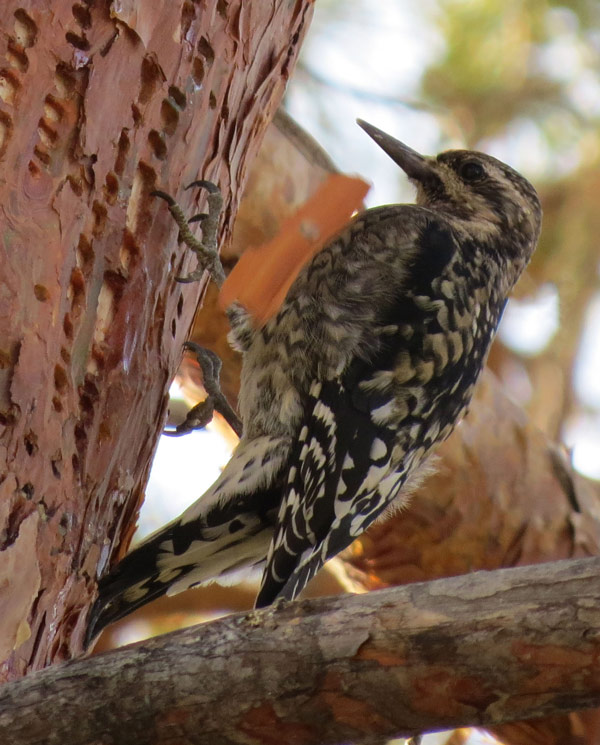
Juvenile Yellow-bellied Sapsucker
by Cliff Miles
©Cliff
Miles
|
|
By far,
our most common Utah sapsucker is the Red-napped. Its name
points out the red patch on the back of the head (nape) and is
typically the most diagnostic characteristic for the adult male and
female. But be aware that sometimes this red patch is not very
prominent and is even occasionally lacking. Red-naped Sapsuckers and
the Yellow-bellied Sucker are the closest look- alikes of the four.
Along with the red nape ,another key character that separates these
two is a more extensive red throat in the Red-naped which partly
covers the black “frame” surrounding the throat. The Yellow-bellied
Sapscucker normally has an entire black frame separating the throat
from the rest of the face. The back of the Red-naped has less white
banding which is generally arranged in two areas separated by a black
mid-line. |
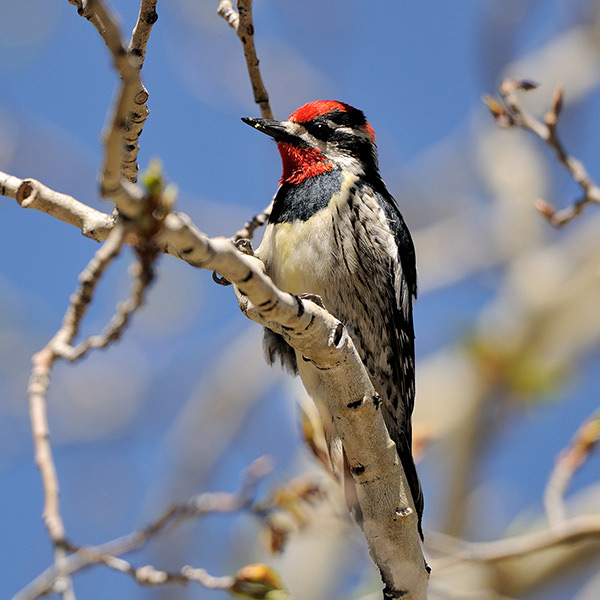
Red-naped Sapsucker
- (juveniles)
by John Crawley
©John Crawley
|
|
Yellow-bellied Sapsuckers are a rare fall and winter migrant and
visitor to our state. It, along with the Red-breasted and Red-naped,
were prior to 1985 considered one species. Many of the early
Yellow-bellied Sapsucker records for our state were probably Red-naped.
To date, there have been approximately 20 vetted records for Utah.
Most of these have come from Washington County during the winter
months. There are currently three records being reviewed for this
fall, all of which are juvenile. The juvenile plumage is retained
later in the fall and winter than the other sapsuckers which helps
separate species. The Yellow-bellied Sapsucker is the widest ranging
of the four, occurring across Canada and the eastern United States.
It is also the most migratory of the four species, wintering in to
Central America. |
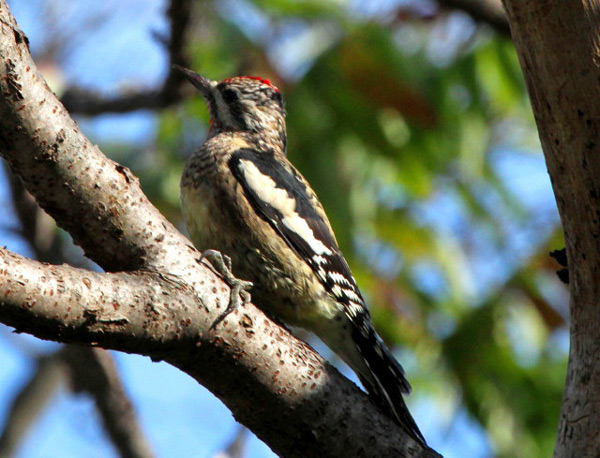
Yellow-bellied Sapsucker
- (juveniles)
by Eric Peterson
©Eric Peterson
|
|
The
Red-breasted Sapsucker is also a rare winter visitor to our
state. It’s normal breeding range is From British Colombia to the
Pacific States. There have been 14 vetted records, most occurring in
the last 15 years, which interestingly coincides with the increase in
the number of birders in the state. One problem that exists with this
sapsucker and the other two mentioned above is the fact that their
ranges often overlap and they are known to hybridize fairly commonly
which complicates identification. Many of the reported sightings
since as early as 1931 have been recognized as hybrids. Again, the
records committee is currently reviewing three Red-breasted Sapsucker
records from Washington County from November 2018. The Utah records
committee normally reviews two or three records per year for this
species |
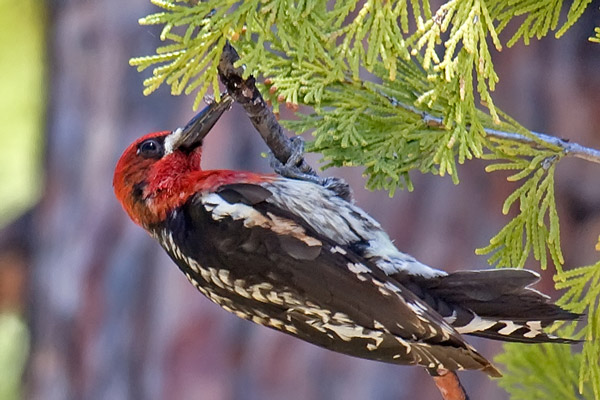
Red-breasted Sapsucker
by Kendall Brown
©Kendall Brown
|
|
The fourth
Utah sapsucker is the Williamson’s Sapsucker. It is noticeably
different in coloration and distribution in the state. The male is
strikingly more black but still has the prominent white wing patch
which all the sapsuckers have. It is a fairly common summer breeder
in the higher mountains of the state and is uncommonly found in the
winter. In Utah County, they are often found in American Fork Canyon,
Sundance and Aspen Grove in Provo Canyon, along the Strawberry and
Manti ridges, and the Nebo Loop.
Like we do
at our monthly meetings with the bird-of-the-month twenty questions, I
thought in closing that I would throw in a few questions for you to
ponder about sapsuckers.
|

Williamson's Sapsucker
- (juvenile)
by John Crawley
©John Crawley |
Test Questions [Not necessarily in the text
above]
1. Which sapsuckers have been recorded in Utah County?
2. Which sapsucker(s) is the only one you would normally see in Costa
Rica, Alaska, Utah?
3. Which of the 8 sapsuckers (four male, four female) lacks a prominent
wing patch?
4. Which sapsucker was found in the Payson cemetery July 1, 2018?
5. Which of the four species (male) has a red throat?
6. You find a juvenile sapsucker on the Provo Christmas Bird Count.
Which species will it most likely be?
7. Which sapsucker is the least migratory?
8. Which sapsucker migrates the farthest?
9. Which Utah sapsucker is found at the highest mountain elevations?
10. Which two continents do not have woodpeckers? |
|
|
|
Special
Report
Records Committee Report: A New Species
for Utah
On September 19th Nikki Emanuel discovered a
Blue-footed Booby at Warm Creek Bay, an out-of-the-way corner of Lake
Powell in Kane County. She got some great
photos of this bird and sent
them into the Records Committee along with
a sighting report which was
unanimously accepted, making the Blue-footed Booby the
464th species.on Utah's bird checklist.
A second possible first-state
record for a Hutton's
Vireo is presently under consideration. This record has been sent to a
second round after a blind vote in the first round of four to accept, four not
to accept and one with a concern that it isn't a naturally occurring bird.
Concerns as to whether it is properly identified and
also that this species is not know to migrate much -- and this bird is far from
the nearest known sighting for this species, are now being considered in the
second round. A vote of 6 of 9 is decisive in for the second round.
(The first round must be unanimous and the final third round must only be a
majority). We'll soon see how it comes out!
|
|
|
Field Trip Reports
|
|
|
|
Washington County Fall Field Trip
2nd and 3rd of November.2018
by Suzi Holt
|
On Friday morning
November 2, 2018 thirteen birders set out at 6:30 am. It was still dark as
we rode out towards Lytle Ranch Rd. Our first stop was at Welcome Springs it
was dusk and so we headed up the wash. We saw two Long Eared Owls!
What a way to start the day! We also saw Dark-eyed Junco, a Pinyon
Jay, and a Red-naped Sapsucker. From there we made our way to
Lytle Ranch. On the way we saw Cactus Wren, Rock Wren, Mountain
Bluebird, House Finch and some White-crowned Sparrows. At the Ranch
we were greeted by Ruby-crowned Kinglets, Robins, House Sparrows,
White-crowned Sparrows and Pine Siskin. |
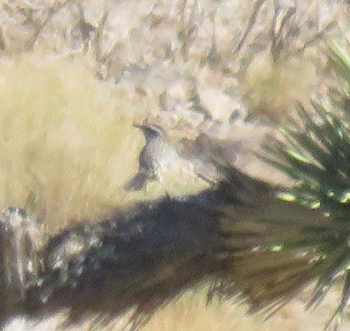
Cactus Wren |
|
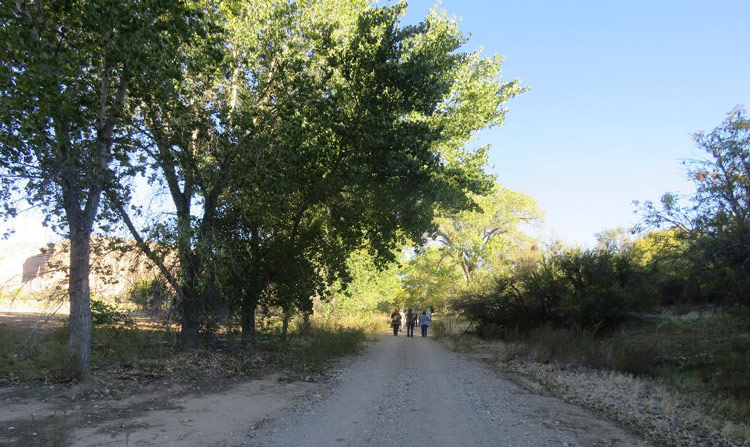
Up with the sun to see some southern-Utah birds. |
We then headed straight for the Orchard to find
some woodpeckers. I learned a valuable lesson from Dennis and Merrill that
morning to just stop and listen! As we listened...in a couple minutes I
could hear drumming and we located a Sapsucker. Everyone got a great look
and then it flew into the Mulberry Tree and was working it's way up into the
thick branches near the top. Dennis and Merrill gave reasons to why it was a
Yellow-bellied Sapsuker vs Red-naped Sapsucker.
[Link to the Sight Record
submitted to the Records Committee] |
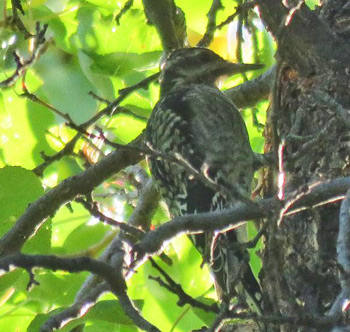
Yellow-bellied Sapsucker |
|
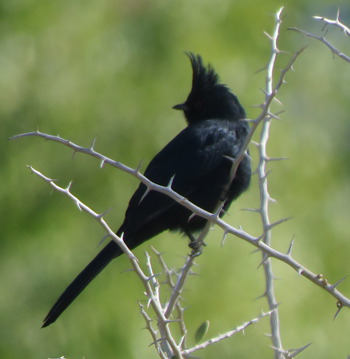
Phainopepla |
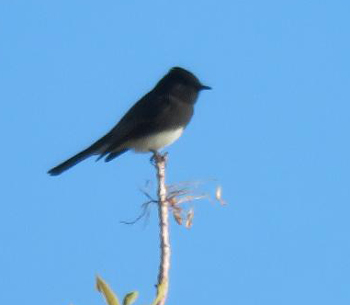
Black Phoebe |
What a great find! We
went on to find Phainopepla, a cooperative Black Phoebe, Spotted
Towhee, White-crowned Sparrows, more Ruby-crowned Kinglets, Western
Bluebirds, Ring-necked Pheasant, Bewick's Wren, Ravens, Golden Eagle, Great
Blue Heron, Gambel's Quail, Red-tailed Hawk, Rock Wren, European Starling,
Dark-eyed Junco, American Kestral and while eating our lunch and
changing Kaylene's flat tire we saw Yellow-rumped Warblers.
|
|
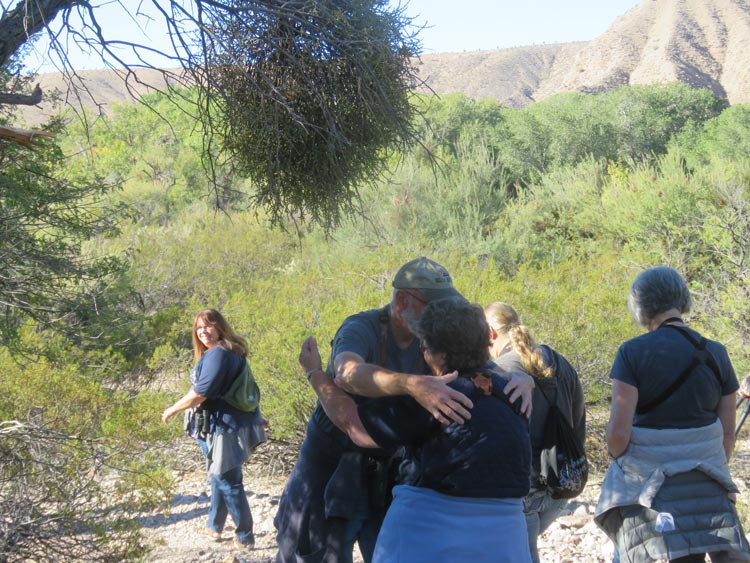
Dennis Shirley taking advantage of a Mistletoe in the tree to smooch
with a a random birder...
Oh, hold it! It's his wife! I think we're okay on that (...a
hint of a scandal to heighten the drama) |
|
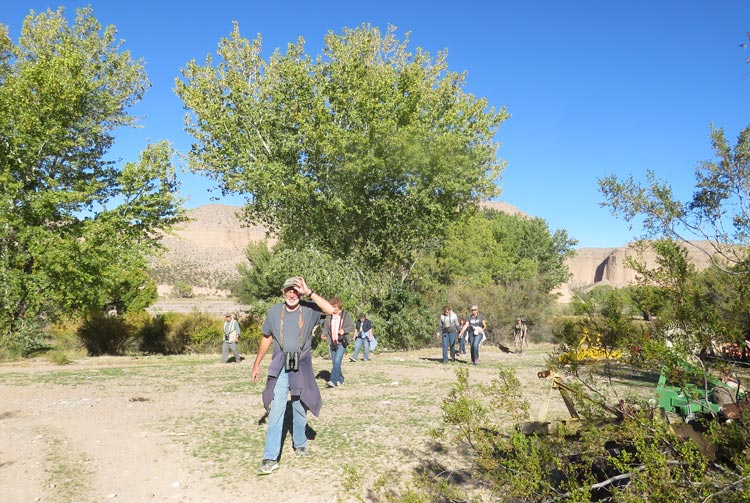
Dennis, after his brief encounter with a potential legal problem --
cameras are everywhere these days!
|
|
We stopped at a wash on the way out to look for
Black-tailed Gnatcatchers and didn't have any luck, so we followed
Dennis to another spot on the Beaver Dam Slope. Here we immediately found it
as it jumped from bush to bush. We also saw a couple more Cactus Wrens,
Rock Wrens, White-crowned Sparrows, House Finch, and a Loggerhead
Shrike! What a great morning!!! |
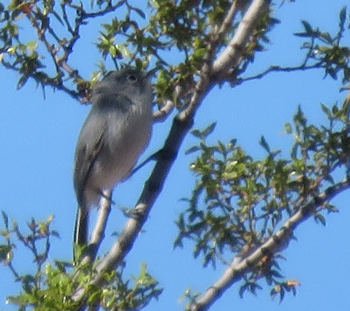
Black-tailed Gnatchatcher |
|
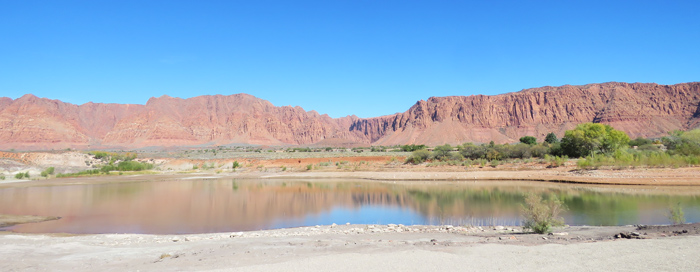
Ivin's Reservoir |
|
On the way back we stopped at
Ivin's Reservoir and saw Belted Kingfisher, American Coots, Canada Geese,
Ruddy Duck, Ring-necked Duck, Greater Scaup, Mallards, Say's Phoebe, Black
Phoebe, Pied -billed Grebe, Eared Grebe and a Great Blue Heron.
|
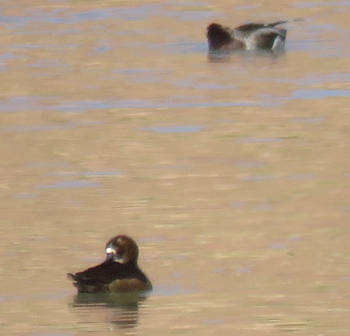 |
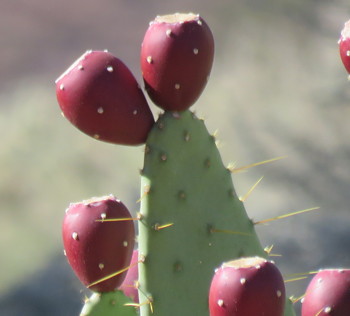 |
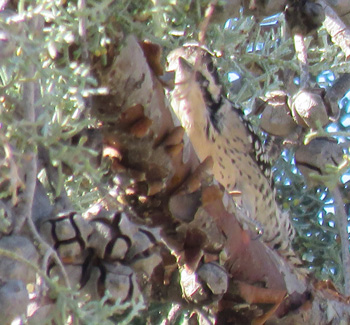
Ladder-backed Woodpecker |
We then stopped by a feeder in Kayenta. We saw Anna's Hummingbird, a
Ladder-backed Woodpecker, Abert's Towhee, Gambel's Quail, Lesser
Goldfinch, Mourning Dove and Northern Flicker.
|
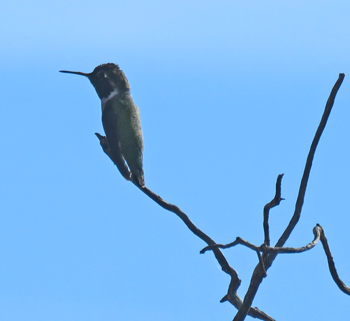
Anna's Hummingbird |
|
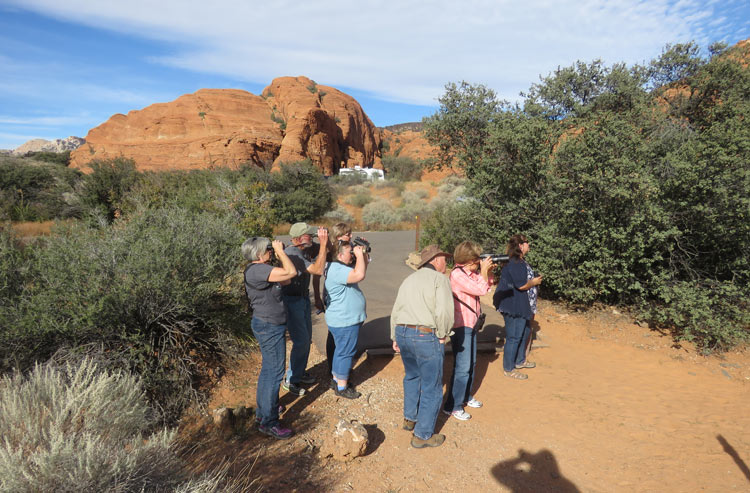
Snow Canyon...birders looking at the Crissal Thrasher |
|
We went to Snow Canyon in search of Crissal Thrasher and found one in
the campground, we also saw Anna's Hummingbird, Woodhouse's Scrub Jay,
Blue-gray Gnatcatcher, Gambel's Quail, Bewick's Wren, Rock Wren,
Ruby-crowned Kinglet, White-crowned Sparrow and Yellow-rumped
Warbler. |

Crissal Thrasher
(this photo was taken in the afternoon) |
|
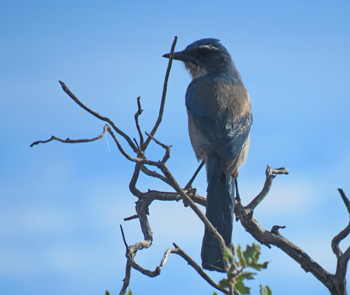
Woodhouse's Scrub-Jay |
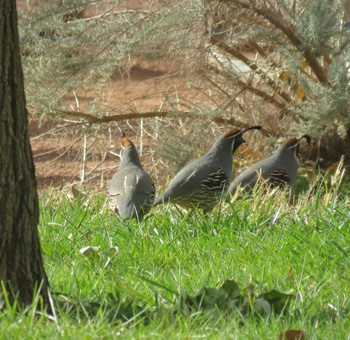
Gambel's Quail |
|
A few of us decided to go by Tonaquint Nature Park. We found the Green
Heron, Black-crowned Night Herons, Wood Duck, American Coot, Mallards,
Anna's Hummingbird, Eurasian Collared Dove, Mourning Dove, Abert's Towhee,
Orange-crowned Warbler, and a Marsh Wren. A few continued and
went to Boot's Cox Park for the Vermillion Flycatcher. What a great
first day!!! |
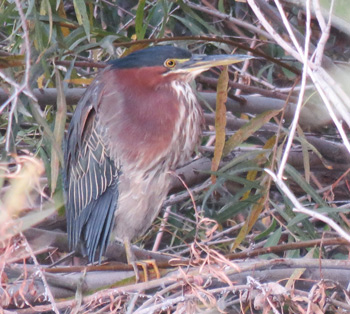
Green Heron |
|
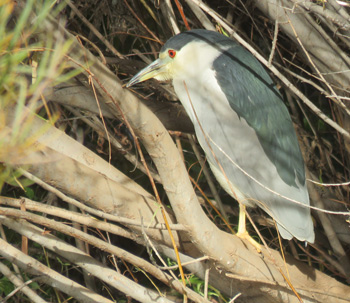
Black-crowned Hight-Heron |
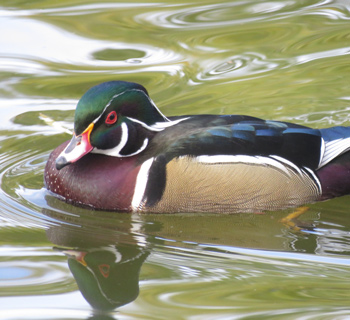
Wood Duck |
(Day Two) |
On Saturday morning November 3, 2018 we met at Walmart at 8:30 am. From
there we went to Hurricane to look for the Inca and White-winged Doves. We
found 27 White-winged doves but it was really windy so I think the
little Incas were still hiding out. We saw Wild Turkey's, Eurasian
Collared Doves, Yellow-rumped Warblers, Sharp-shinned Hawk and
Norther Flicker. We also met one of the neighbors who is a falconer. He
brought our a beautiful juvenile Harris's Hawk for us. And we had a
good visit with him, noting he had just had a Spotted Owl in his yard a week
ago. Wow! |
|
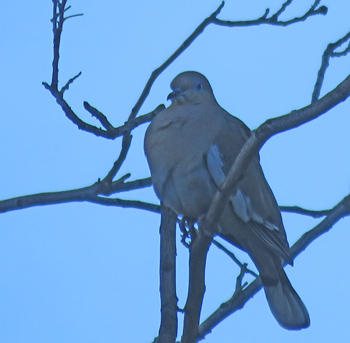
White-winged Dove |
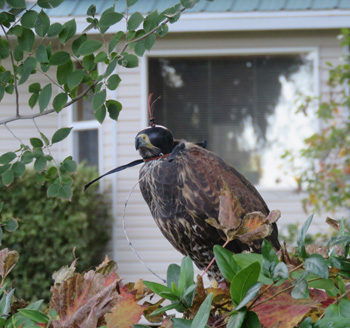
juvenile Harris's Hawk |
|
We then headed to Dalton Wash to track down a Rufous-crowned Sparrow.
It took a lot of patience but Dennis finally located two! We also saw
Canyon Wren, Rock Wren, Ravens, White-crowned Sparrows and Dark-eyed
Juncos there. We made a stop again for the Inca doves, still windy and
no luck. |
|
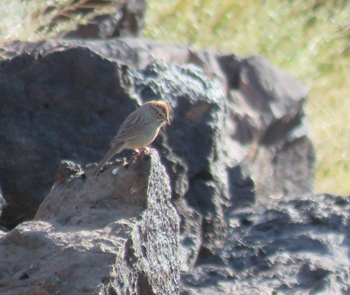
Rufous-crowned Sparrow |
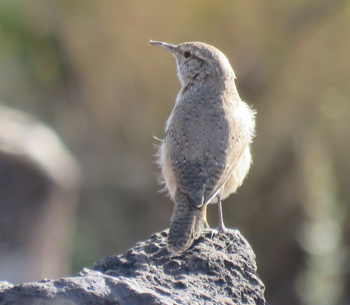
Rock Wren |
|
Then went in search of a Roadrunner. First stop was Confluence
Park, still windy and we only saw White-crowned Sparrow, Robin, Ravens
and our highlight a Verdin! |
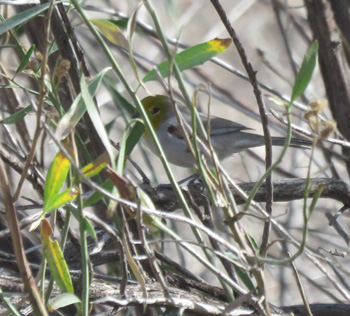
Verdin |
|
With the wind we decided to break up and a few of us went through Hurricane
Fields we saw Brewer's Blackbirds and a couple Red-tailed Hawks.
We stopped by Sand Hollow and saw a Golden Eagle, more Red-tailed
Hawks, a million American Coots, some Ruddy ducks and Eared
grebes, Bufflehead and a lone Tundra Swan. |
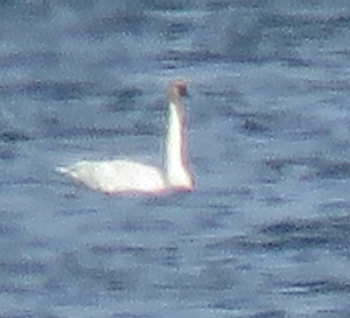
Tundra Swan |
|
We thought we were
finished but stopped at the Hurricane Water Treatment pond not much but a
few DC Cormorants. Then dropped off our last two birders back in St
George. Mom, Amanda and I stopped to see the Vermillion Flycatchers
at Boots/Cox Park and then stopped again at the Hurricane Water Treatment
plant after a tip from Dennis to see a lone Snow Goose with the
Canada Geese, lots of Northern Shovelers, Ruddy Ducks, Ring-necked
Ducks, Bufflehead, Red-tailed Hawk and DC Cormorants. |
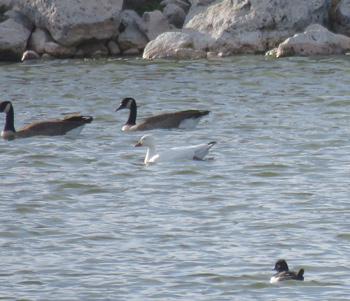 |
|
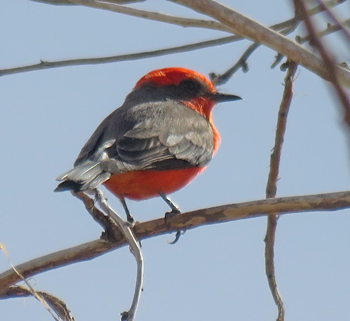 |
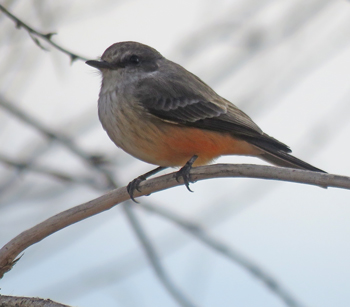 |
|
male Vermillion Flycatcher |
female Vermillion Flycatcher |
On the way home from dinner we finished out the day with a Great Horned
Owl by the Hurricane Water Treatment Plant. Thanks to everyone who
joined us it was a great trip!!! Our final total species was 72!!! Not to
bad for a Fall trip!
|
|
|
|






